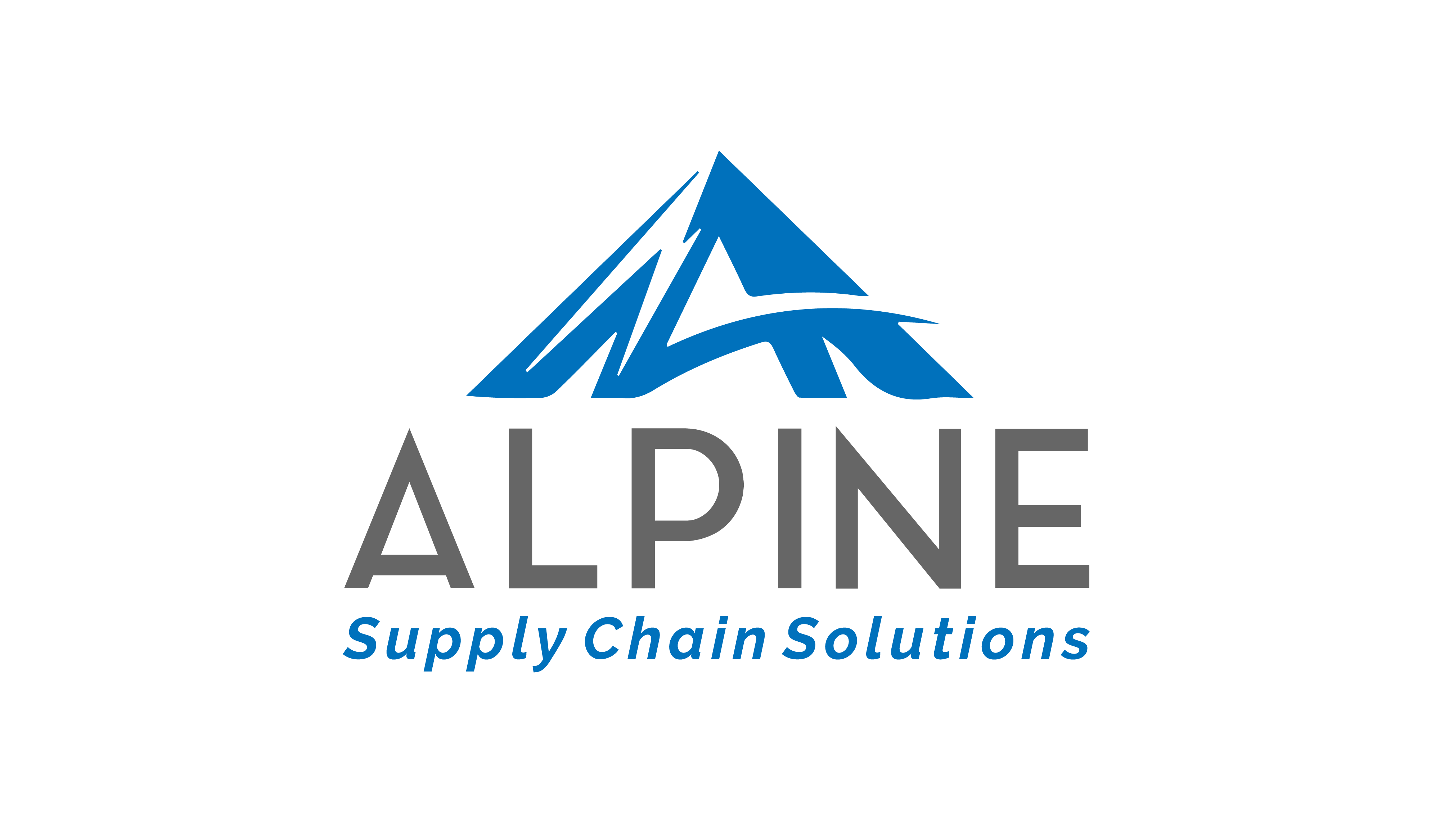
by Noelle Abarelli | Oct 3, 2023 | Blog, Warehouse Management
Raymour and Flanagan, a prominent family-owned furniture business that has been serving customers since 1947, faced a significant challenge. Operating with outdated technology and systems within their distribution network, they encountered friction in their processes, impacting both their operations and customer experiences. To address these challenges and keep pace with evolving customer demands, they sought to implement a modern Warehouse Management System (WMS) and optimize their distribution center.
Enter Alpine Supply Chain Solutions, a boutique consulting firm specializing in refining operations within distribution centers. Recognizing the need for a comprehensive WMS, Raymour and Flanagan selected Körber as their new solution. However, they understood that to maximize the benefits of this transformation, they needed expert guidance and support from an Alpine.
Alpine’s expertise and industry-focused approach were exactly what Raymour and Flanagan needed. Acknowledging the complex and expansive nature of the project, the companies collaborated seamlessly, leveraging each other’s unique perspectives and experiences. Despite the potentially chaotic nature of such a major project, the partnership fostered an environment of effective idea-sharing and collaboration.
Through this collaborative effort, they designed an innovative and efficient solution that aligned perfectly with Raymour and Flanagan’s goals. The approach they adopted during the project has already yielded dividends, and they are on track to implement the optimized solution soon.
Having experienced the journey with both Körber and Alpine, Raymour and Flanagan enthusiastically recommend them to anyone embarking on a similar path. The partnership, in-depth knowledge, and openness to understanding and adapting to their unique business needs were critical to the project’s success. With the support of Körber and Alpine, Raymour and Flanagan are well-positioned for a future of streamlined operations and enhanced customer satisfaction, showcasing the importance of strategic partnerships in achieving long-term success. For more from Bryan Anastasi, VP of Customer Care and Business Solutions at Raymour and Flanagan, watch this video.

by Noelle Abarelli | Jul 25, 2023 | Blog
In the fast-paced and challenging business world of today, supply chain executives face immense pressure to deliver continuous cost improvements year after year. However, achieving these demands requires a well-managed program of continuous improvement, especially amidst the frequent changes and uncertainties in the current supply chain. To thrive and gain a competitive edge, companies need to embrace a flexible yet focused approach in their strategic plans and investments. This blog post explores the concept of “Roughly West” and introduces the Continuous Improvement Management Model to ensure ongoing success in continuous improvement programs.
– Contributed by Tom Ryan, Senior Director, Alpine Supply Chain Solutions
Understanding “Roughly West”
“Roughly West” is a term used to describe a corporate strategic direction that allows for flexibility and adaptation. It represents a general destination or goal, which may evolve and change over time. The key to “Roughly West” is its ability to guide projects that support the organization in reaching its objectives, even when those goals may be loosely defined and subject to refinement. By adopting a strategic direction that is both flexible and focused, enterprises can gain an edge over hesitant competitors.
The Continuous Improvement Management Model
The Continuous Improvement Management Model is a repeatable cycle designed to execute the strategic direction of an organization in small, well-scoped chunks. Here are the steps to follow:
- Establish a “Roughly West” Plan: Begin by developing a general direction for the enterprise and outlining the role of each area in moving towards this goal. Identify projects that align with the plan and select one that can deliver incremental improvements within a well-defined timeframe.
- Measure Results: After executing the selected project, measure its results and communicate its success to the entire enterprise. Building confidence and commitment among stakeholders is crucial for the ongoing success of the program.
- Re-evaluate the Plan: Reassess the “Roughly West” plan periodically and make necessary adjustments based on changing conditions. Divide the plan into well-defined phases, each with its own timeframe, to maintain focus and flexibility.
- Embrace the Unpredictable: Acknowledge that the implications of any strategic plan over a two to three year period are difficult to predict. The focus on well-defined phases and plan re-evaluation allows for adaptive adjustments without the need for exhaustive contingency planning.
Getting Started with Continuous Improvement
To initiate a successful program of continuous improvement, start with a strategic plan that outlines the corporation’s general direction for the next two to three years. Focus on a “Roughly West” plan that covers broad yet meaningful strokes rather than getting bogged down in precise details. Then, assess the organization’s current state, identify areas with the potential for impactful improvements, and start with small, well-defined phases that can be executed within controlled timeframes.
The Value of Continuous Improvement Management Model
The Continuous Improvement Management Model offers significant business value compared to the traditional “Big Bang” implementation approach. By segmenting projects into well-defined deliverables with incremental value, capital expenditures are deferred over time, and anticipated benefits are received sooner. This leads to a significant increase in the total value delivered by the project, greater control over project costs, and the ability to adapt tactically to meet changing strategic requirements.
Conclusion
In today’s competitive and uncertain business landscape, supply chain executives must navigate towards a “Roughly West” strategic direction. By implementing the Continuous Improvement Management Model and breaking projects into well-defined phases, enterprises can deliver incremental value, adapt to changing conditions, and gain a competitive edge. Embracing continuous improvement and staying focused on delivering measurable business value will pave the way for success and resilience in the face of any challenges that lie ahead. For more tips on Managing a Continuous Improvement Program, download this white paper.
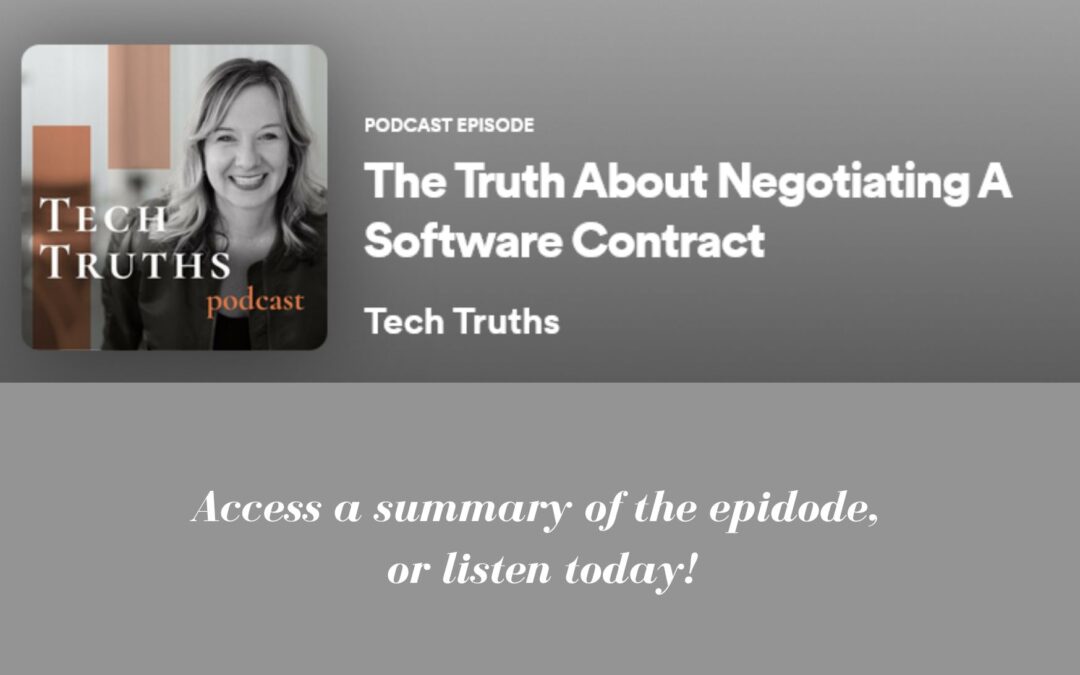
by Noelle Abarelli | Jan 30, 2023 | Blog
If your business is going to buy any kind of software, there’s going to be a contract involved. In this episode of the Tech Truths podcast, The Truth About Negotiating a Software Contract, Alpine’s Senior Director, Allen Ozyazgan walks us through his top tips for contract negotiation.
Listen to his insights, or read on for a summary.
Allen Ozyazgan of Alpine Supply Chain solutions has been in the supply chain industry for close to 30 years. He has been both on the client and vendor side, and has had years of experience both buying and selling software. Nowadays, he works as a consultant helping clients evaluate, select, and implement supply chain software solutions. One of Allen’s main areas of expertise is his ability to help customers work through contract negotiation.
Allen understands that shopping for software can be overwhelming and losing objectivity and forgetting to ask the important questions needed to make an educated decision are common pitfalls. That’s why knowing what goes into negotiating a software contract before you get started is so important, especially as the way we purchase software has changed.
Negotiations were simpler in the past, as it was all about on-premise solutions. But with the growing popularity of SaaS solutions, there are a lot more considerations and components to think about: hosting partners, contract duration, fluctuating users, etc. This means negotiating ends up being about more than finding the right solution for the right price. It’s now centered on finding a solution that will meet your needs for the long haul.
When it comes to negotiating a software contract, Ozyazgan says there are two categories that need to be evaluated:
- Functional, technical, and architectural
- Overall business impact
All of these areas need to be considered before there is a total cost of ownership discussion.
At the end of the day, the most important piece of the puzzle is ensuring that companies are buying the right mix of software, at the right price, for the right length of time, without overbuying. It’s also important to know that negotiations start long before you think they might and that while 95 percent of the details involved in a contract are negotiable, there are a few items that are not!
Listen to the podcast for the full scoop! And if you’re looking to purchase new supply chain software this year, you’ve come to the right place. Simply reach out – we’ve got you covered.
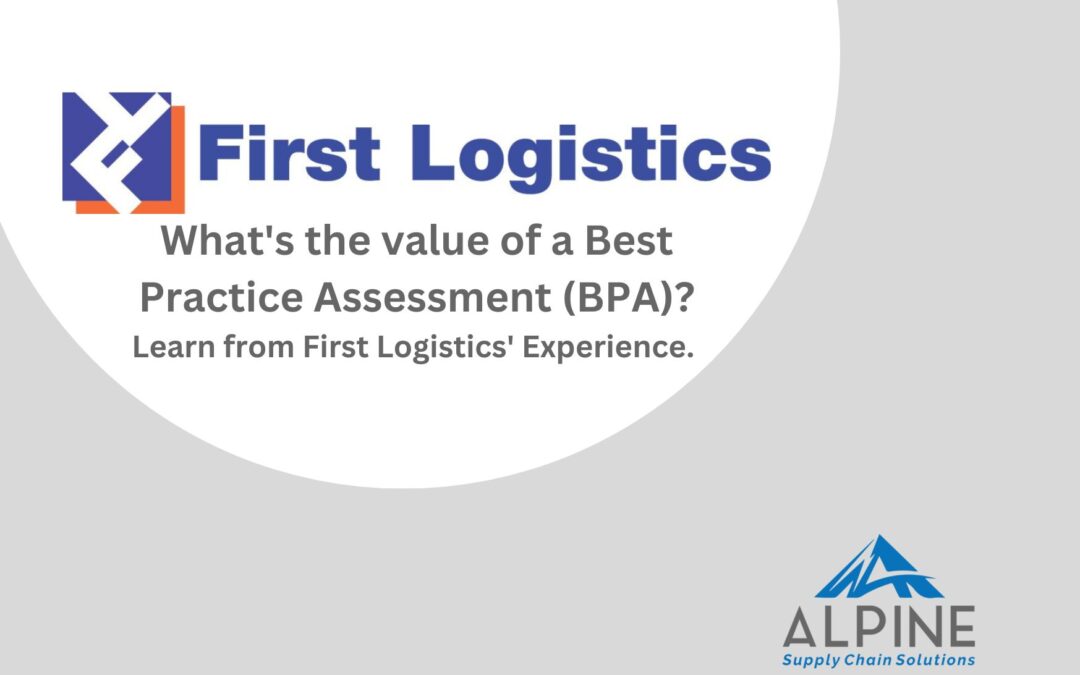
by Noelle Abarelli | Dec 21, 2022 | Blog
When transportation and logistics leader First Logistics’ growth took off, so did their need for a more robust Warehouse Management System (WMS). Their homegrown Inventory Control System wasn’t built to handle their increasing order volumes and system limitations were hampering associate productivity and impeding a sustainable Flow-of-Goods operating model. Plus, the homegrown system was dependent on outsourced partners, which introduced a high level of risk. First Logistics wanted to ensure they invested in the right WMS for their business, so the supply chain leadership team decided to embark on Best Practice Assessment (BPA) to gain a better understanding of their requirements and build a solid case to cost to justify their investment. They engaged Alpine Supply Chain Solutions to lead the exercise.
According to Alpine’s Managing Principal, Michael Wohlwend, “A BPA is a great exercise to help organizations uncover opportunities for improvement while benchmarking their operations against competitive, best-in-class operations. They take just a few weeks and are a great fit for companies seeking to identify supply chain improvements, define requirements, estimate costs, and quantify ROI.”
How does a Best Practice Assessment work?
A BPA will vary by client and objective, but a standard engagement ensures that all business processes and areas of operation are fully reviewed and assessed. By diving deep into the details, a BPA can uncover capital and non-capital improvements across all operational areas including inventory, space, equipment, labor, and systems.
A standard engagement is a four-week process and will look as follows:
Week 1: Data Collection
Our data-driven methodology leverages a deep dive into metrics in every area of your operations including procurement and receiving; putaway; restocking and replenishment; order processing and selection; shipping, staging, loading, VAS; and more.
Week 2: Data Validation
We validate initial data findings during an onsite visit and cross-reference our findings against Best Practice metrics from market leaders such as WERC, ROFDA, and ISO.
Week 3: Qualification
We share initial findings to prioritize the initiatives that streamline business processes to increase operational performance, improve customer service, and reduce cost.
Week 4: Final Results
We create and deliver a plan of actionable improvement recommendations and associated ROI.
What’s the value of a Best Practice Assessment?
The value of a BPA varies by the initial objective of the exercise. For First Logistics, a BPA enabled the supply chain leadership team to confidently respond when Executive Leadership questioned what a WMS would cost, how long an implementation would take, and when they could expect to see benefits. The project was approved as was the cost to add additional resources to implement the WMS as the team was able to clearly identify what resources were available and where there were gaps.
Why the time is right for a Best Practice Assessment
Over the past few years, supply chain leaders have faced more complex, changing conditions than ever before. Enterprises of all shapes and sizes are seeking to shake up their supply chain strategies to become more resilient, collaborative, and networked with customers, suppliers, and other stakeholders. A BPA offers a great method for understanding which supply chain Best Practices will significantly improve product quality, customer service levels, market share, and return on assets, and as a result, your company’s overall performance. Reach out if you’re interested in learning more.
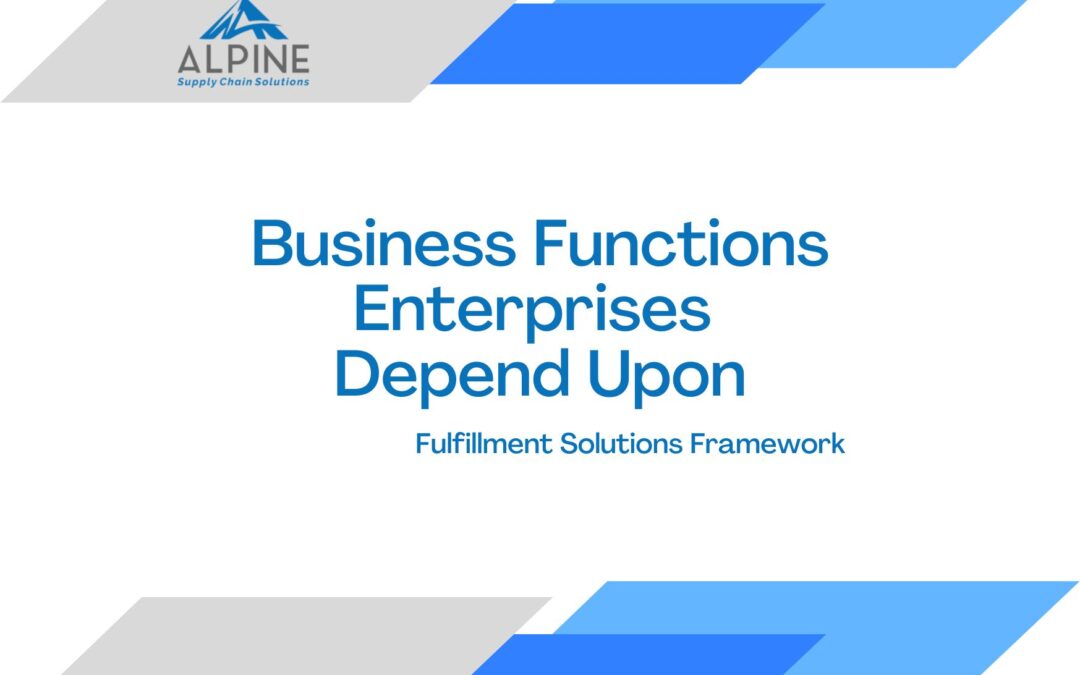
by Noelle Abarelli | Nov 23, 2022 | Blog
Executives tasked with delivering continuous improvement within the enterprise’s fulfillment and supply chain operations are always seeking the best way to chart a path to success. They are on the hunt for the next “Big Idea” that will deliver this year’s victory. But, this constant quest is constrained by many factors:
- A clear understanding of the strategic direction of the corporation
- A definitive understanding of the current state of the enterprise’s fulfillment operations
- An understanding of how their operations stack up against their competitors’ operations
Executives must also overlay emerging best business practices for fulfillment operations and enabling technology solutions — and then decide which ones are worth adopting in their organization. This isn’t an easy task, but fortunately, there is a framework that can help.
Alpine’s Fulfillment Solutions Framework is a tool that can help supply chain executives identify that next “Big Idea” and chart the path to success. It is a presentation of functional areas for which advanced supply chain process approaches and technology systems have been developed, implemented, and proven to deliver business value in multiple enterprises and industries.
Download the framework today to learn more about the functional areas that have the greatest impact on improving, or creating, the high-performance supply chains and fulfillment operations that are at the heart of strong corporate performance. You can use it to:
- Measure the completeness of your fulfillment practices and supporting technologies
- Determine which proven solutions exist that you can apply to your situation
- Understand the impact these solutions can have on your fulfillment operation’s performance
This framework is designed to provide a broad model for manufacturing and distribution organizations that can be easily adjusted to each organization’s specific business. Download the White Paper today, and get ready for a great 2023. If you’re looking for other ways to get the most out of your supply chain, then look no further, just give us a call.
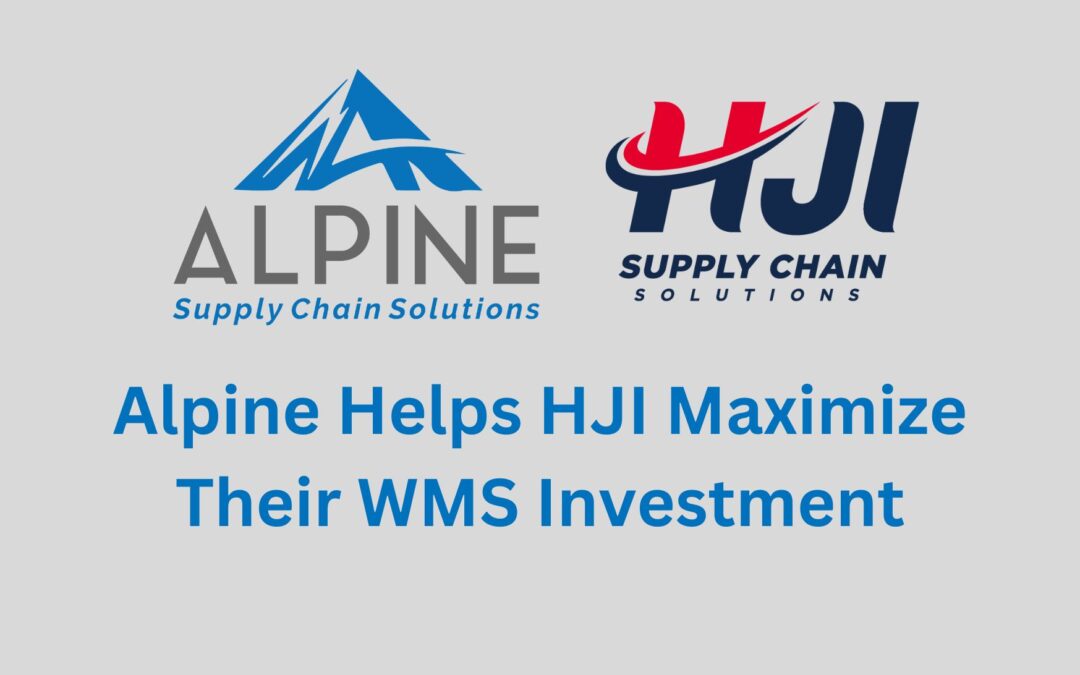
by Noelle Abarelli | Sep 14, 2022 | Blog, Warehouse Management System
If there’s one thing we know for certain it’s that when we make a considerable investment in technology, we want to see that investment pay off. We want to know that our time, effort, money, and resources were not wasted. So, when HJI Supply Chain Solutions implemented the Körber WMS, they expected to maximize space, improve efficiencies and increase productivity across their entire business. Unfortunately, without a dedicated resource to grow and support application use, the Körber implementation stalled and failed to yield the desired results. In fact, HJI had an underutilized WMS and was considering starting all over again with an entirely new WMS system.
Before completely scrapping what had already been done, HJI reached out to Alpine for insight. As Körber WMS experts, Alpine had the skills to determine a solution for HJI to get back on track. Alpine re-engaged with Körber and led the execution of client-side responsibilities, giving HJI the time to focus on running their operations without interruption. Alpine took on:
- Developing a full acceptance test plan to assist with the execution and documentation of the user acceptance testing process.
- Documenting work instructions and standard operating procedures.
- Serving as the communication conduit between Körber WMS, ERP providers, and the HJI team.
And much more! In the end, The implementation was a success and, in the process, HJI was able to broaden and deepen its solution knowledge base. HJI has since successfully rolled the Körber solution out to a larger facility in Louisville and two additional facilities in Memphis. They are securely under Körber’s support wing and are now working to fully link all clients and all warehouses on the application.
This August, Alpine Supply Chain Solutions was named to this year’s SupplyChainBrain list of 100 Great Supply Chain Partners. As part of their coverage, SupplyChainBrain documented the entire project between HJI and Alpine, you can view that article here.
And, If you’re struggling with a WMS implementation, don’t give up! Engage with experts who can provide a second opinion to ensure you’re not missing out on opportunities to make use of the investment you’ve made. If you’d like help with your project, don’t hesitate to give us a ring.


